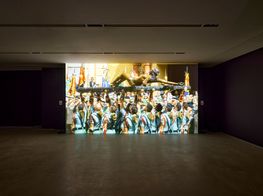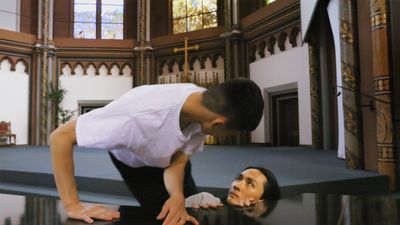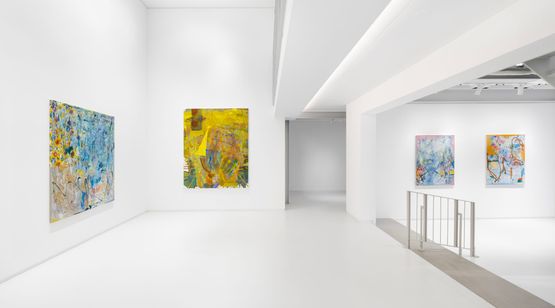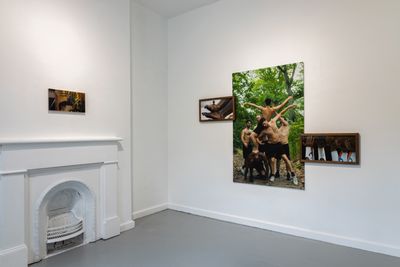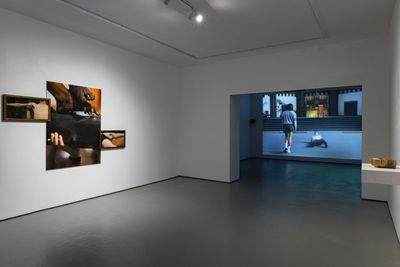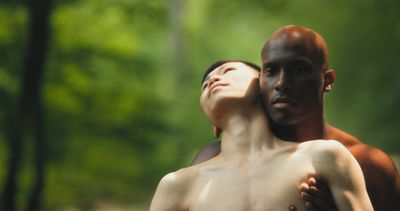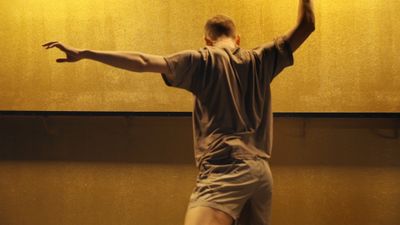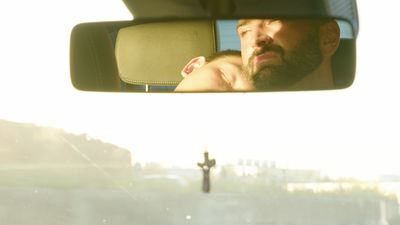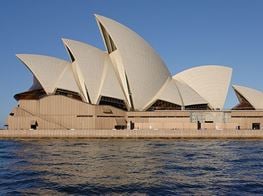Young-jun Tak: 'I look at my approach as a kind of hijacking'
Young-jun Tak. Photo: Sangtae Kim, Fondation d'entreprise Hermès.
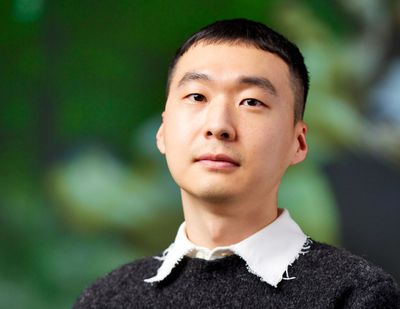
Young-jun Tak. Photo: Sangtae Kim, Fondation d'entreprise Hermès.
When Young-jun Tak screened Wish You a Lovely Sunday at the 16th Lyon Biennale in 2022, the film, which features in the artist's first solo show in Australia at COMA, Sydney, this March, struck a chord.
Shown at the gallery's Darlinghurst location, Wish You a Lovely Sunday involved Tak inviting two choreographer-dancer pairs to create a choreography to the music of different Bach piano pieces for four hands, for the Kirche am Südstern church and SchwuZ queer club in Berlin.
After days of rehearsal, Tak swapped each pair's location on the day of filming, resulting in a heightened performance in each space, where movements transformed into orienting acts of sense and place-making.
The film, Tak says, visualises a dilemma of sorts; it seeks to highlight the similarities that seemingly different, if not oppositional contexts—the church and the queer club—share, as community spaces. Over 18 minutes, dancers move in both locations, as their bodies seem to stitch succeeding scenes seamlessly.
In 2023, Tak showed the work in Dancing About Architecture, at the High Line in New York, and the Chicago Architecture Biennial, This is a Rehearsal, which spotlighted the film's sensitive interrogations of architecture and movement in the context of desire, belonging, and connection.
These ideas were likewise expressed in Tak's 2023 exhibition at the Julia Stoschek Foundation in Berlin and Düsseldorf. Inaugurating a series of solo presentations by emerging artists called 'DOUBLE FEATURE', Tak presented Wish You a Lovely Sunday (2021) alongside Wohin? (2022), which he describes as an Autobahn [German highway] music video, where a couple making out in the backseat of a car conjures deeper feelings of disorientation and aimlessness.
Tak followed up Wish You a Lovely Sunday in 2023, with Love Your Clean Feet on Thursday, which will be shown as part of Hovering, a group show at Capsule's new space in Venice (6 April–23 June 2024), as well as in the upcoming Bangkok Art Biennale, which opens in October this year.
In this film, a choreography performed by six gay male dancers in the Grunewald forest, a gay cruising spot in Berlin, bridges references to an Easter ritual undertaken by Spanish Legion soldiers on Maundy Thursday during Holy Week, and Kenneth MacMillan's 1974 ballet Manon, where dancers lift and carry the eponymous female protagonist.
Referred to as 'Sunday' and 'Thursday', each choreographic intervention performs a merging, if not a mediation, of difference. Both were first screened together in 2024 at Atelier Hermès in Seoul, where the artist recently also participated in the group show Unsentimental Education at BB&M (30 January–9 March 2024).
In this conversation, Tak, who will open a solo show at Philipp Zollinger in Zurich ahead of Zurich Gallery Weekend and Art Basel in Basel this year, describes the origins of these film works, illuminating the references that each makes, and the questions they intend to raise about belief and human contradiction.
SBCould you talk about the genesis of Wish You a Lovely Sunday and Love Your Clean Feet on Thursday?
YJTWe have to rewind to Pride parade in Seoul in 2014. That was the first time I went to Pride, and it was also the first time that Pride in Seoul was interrupted by homophobic Christian groups, who blocked the parade for around four to six hours. They cried, prayed, and handed out flyers. It was total chaos.
I'd heard about these people and always thought of them as monstrous figures. But then I realised they were young people you would see in college, and people who could be your parents. I collected their flyers and the illogical logic of their message stayed with me.
I always wanted to make things as a child, but I was afraid of doing it because I didn't study art.
I wanted to understand why they invested their time and effort into hating a group of people, so I began visiting Christian institutions and their so-called conversion therapy centres, collecting pamphlets and flyers from these places as evidence of my encounters. I brought these documents with me when I moved to Berlin in 2016, because I knew I would have time to digest my experiences in these anti-gay spaces.
At first, I thought I would write something. But in Berlin, I felt like I could try working artistically rather than as a writer—I always wanted to make things as a child, but I was afraid of doing it because I didn't study art. That's how those papers I collected became the material for my first sculpture.
SBYou're talking about Salvation (2016), the statue of the Virgin Mary covered in pamphlets, right?
YJTYes, I covered a statue of the Virgin Mary with the papers that I collected. At the time, I thought sculpture was my medium and videos would never be my thing. Then the pandemic happened, and I started following a lot of YouTube channels from home, in particular the channels for international ballet companies like The Royal Ballet in London, which made fascinating rehearsal videos.
These rehearsal videos were mesmerising. Every half minute or so, you'd hear this critique on a dancer's posture or movement. Ideas about rehearsal and choreography helped me connect sculpture to video, as a materialistic approach to an immaterial medium, which led to Wish You a Lovely Sunday.
SBWish You a Lovely Sunday enabled you to unpack your experience at Seoul Pride in 2014 and the curiosity you had about these Christian groups.
By inviting a choreographer and dancer to develop a performance for a church and a queer club before swapping the spaces they would perform in, you created the conditions to, as you have said, explore the resonances between communities that actually have a lot in common. Could you talk about that?
YJTI look at my approach as a kind of hijacking. Rather than just throwing stones from outside, it was important for me to see what was going on inside. That's why I visited these anti-gay spaces. When I first went to meet these people—priests, pastors, and conversion therapists—I literally had cramps. I experienced physical stress because I voluntarily entered a zone where I could be attacked and had to be prepared to fight back.
Rather than just throwing stones from outside, it was important for me to see what was going on inside.
The first few times I visited, I didn't reveal who I was, and they were so curious why I as a young man was so interested in such topics. In the beginning, I was rather reserved, but then I was like, wait a minute, I can't do this, so I just told them that I'm homosexual. I was so ready for conflict, but they just held my hands and told me this was the right place for me to be.
Then the manipulation started, where they promised they could cure me. This was mind-blowing: they were convinced that they were doing the right thing. That was so intriguing and important to see it from the inside.
SBYou might say that they were coming from a place of love, which makes it feel even crazier since you were also coming from a place of love. Wish You a Lovely Sunday seems to dramatise that extreme similarity; two languages and approaches flipped in two spaces, both defined by ideas around love, desire, and acceptance.
YJTAs a joke, I sometimes say that the extreme left and right bend too much and then eventually meet at some point. Even recently I have seen radical and progressive thinkers become conservative depending on the situation, for example with the refugee crisis. So in Wish You a Lovely Sunday, it's a political gesture to say that churches and queer clubs are fundamentally equal.
But it's important to note that I'm not criticising Christianity. Christianity is something you can't avoid growing up in South Korea, so I was always drawn to it even though I'm not a believer. The structure of the film is also very much about documenting a dilemma around this topic of human belief, which shapes and structures societies. Religion is one of the strongest forms of belief, which can often trump historical or scientific knowledge, which can lead to extremism.
At the end of the day, humans are self-contradictory. There is a tendency to polarise things into black-and-white situations, but really life is grayscale. I also see myself as self-contradictory. While I criticise religious conservatism, the first thing I do when I go somewhere is see the churches. I love Christian art and architecture, yet these visuals can't be detached from the principles I criticise. So I try to compromise: I can like the visuals, but also criticise the principles they represent.
I want to bring this very human condition of self-contradiction to my work. That's why I try to bring together contrasting conditions: to merge them through queer bodies.
SBHow do you merge these contradictions in the context of Love Your Clean Feet on Thursday?
YJTI saw images of this military ritual in Spain, the Maundy Thursday [Thursday before Easter] ritual in Malaga during Holy Week, around the time I moved to Germany, which is a deeply Christian society. Easter was interesting for me because while we celebrate Christmas in South Korea, it's more of a commercial holiday, while Easter didn't really exist in my calendar. But in Europe, Easter is a really big holiday.
Yet while religious people go to southern Europe to be part of this public extravaganza ritual, Easter in Berlin is when the city hosts hedonistic gay sex events. So I had an idea to combine these two contexts by juxtaposing the Maundy Thursday ritual with the ballet Manon, where male dancers worship and constantly lift the female protagonist.
I thought I was contrasting these two things, the Christian ritual and Manon, because the former is hypermasculine while the latter is hyperfeminine. But when you see how they are performed visually, there are similarities in their choreographies, like when Manon is carried by male dancers and spreads out her arms, creating a crucifix moment.
SBWhat seems to connect the location where you filmed Love Your Clean Feet on Thursday, which is set within a forest known as a gay cruising spot, and the church and club that feature in Wish You a Lovely Sunday, is desire, or a drive to act on one's desires.
That makes me think of Wohin?, where the Autobahn seems to amplify this very core human drive: a desire for connection, perhaps?
YJTI think religious belief fundamentally comes with a type of desire. Take Korean Christianity, of which the earlier historical development is very much connected to shamanism, where you are always praying for something: like for one's health, wealth, or successful career. So in that sense, communal religious spaces are full of individual desires, which generates a very strange feeling.
In terms of Wohin? you start in this car, and see this couple kissing in the rearview mirror; it intensifies and then they disappear. The driving in the video is very aimless, so it's a dreamy situation. The title is also a question: where are you heading? That relates to desires and dreams—what do you want and wish for?—and the question of whether you can ever achieve them.
...the work is more about the question of how we live our lives. What are we doing and where are we heading?
So of course the hook to bring audiences into this state of mind is the sexuality of these men, but the work is more about the question of how we live our lives. What are we doing and where are we heading?
SBYou've come back to the Autobahn in your work as this symbolic space. Why?
YJTWhen I first did my research about the Autobahn, I approached it like white asparagus or spargel in German. It's seen as this national vegetable, in terms of what it means to Germany. I believe that humans somehow need to project their sense of belonging, and in the case of Germany, people seem to project this sense onto quite mundane things like this colourless vegetable or this harmless-looking road infrastructure.
There have been studies about what the Autobahn represents in Germany, especially in terms of speed limits, which is a discussion that feels like debates around gun regulation in the United States. People become really irrational when the topic is brought up to the public: no matter what political party, people talk about limitless speeds on the Autobahn as their fundamental freedom.
I found this to be strange and quite deep, so I researched how the Autobahn started. It was majorly promoted during the era of Adolf Hitler. He wanted to boast the advance of German technology by using forced labour although the regime failed to achieve the extensive construction due to the shift of focus to the growing war.
In the beginning, each party related to the Autobahn project had to persuade business partners and the government, so they made promotional campaigns. One of the first projects was HaFaBa, meaning Hamburg, Frankfurt, and Basel. The campaign poster reminded me of Wanderer above the Sea of Fog (1818), the famous painting by German Romanticist Caspar David Friedrich, of a man standing on the edge of a cliff looking over the landscape in front of him.
But in this HaFaBa poster, we see a completely naked muscular man, an Autobahn labourer, standing with a shovel on a cliff-like graphic design and looking down this Autobahn, which appears super phallic. So the Autobahn project was connected to this masculinity—which is also expressed in this idea of heavy industry: of cars and fast driving, which connects to the desire for limitless speeds on the Autobahn today, I guess.
But also, in the gay community in Germany, Autobahn exits were known as cruising spots. Back in the day, people shared information about meeting spots along it, like Sunday, 3:00 pm at exit number something. Then people would turn up there. So the Autobahn was also this very queer venue.
I wanted to bring this history of desire, this desire for infrastructure, into Wohin?. So I collaborated with one of the most important organists in Germany, Andreas Sieling, and vocalist Tim Morgan, who is a countertenor, which is the highest pitch of a male voice in opera singing. Only a handful of people can make this super high, very gender-fluid voice.
SBWhere do you see yourself going from here as an artist?
YJTThe titles of my videos may indicate a bit, that my ambitious goal is to fill the entire week with this film series. I'm already working on the third film, carrying 'Monday' in the title, which will be shot this year in Norway and Spain. I'm enjoying how this series is developing a lot. It's a big collaboration, and it's really thrilling. —[O]

